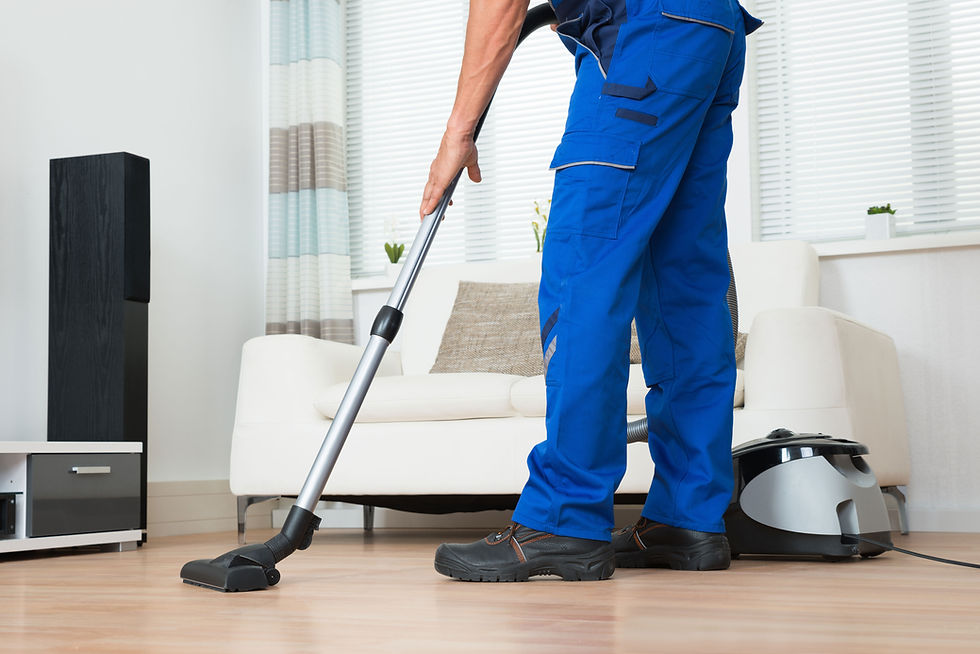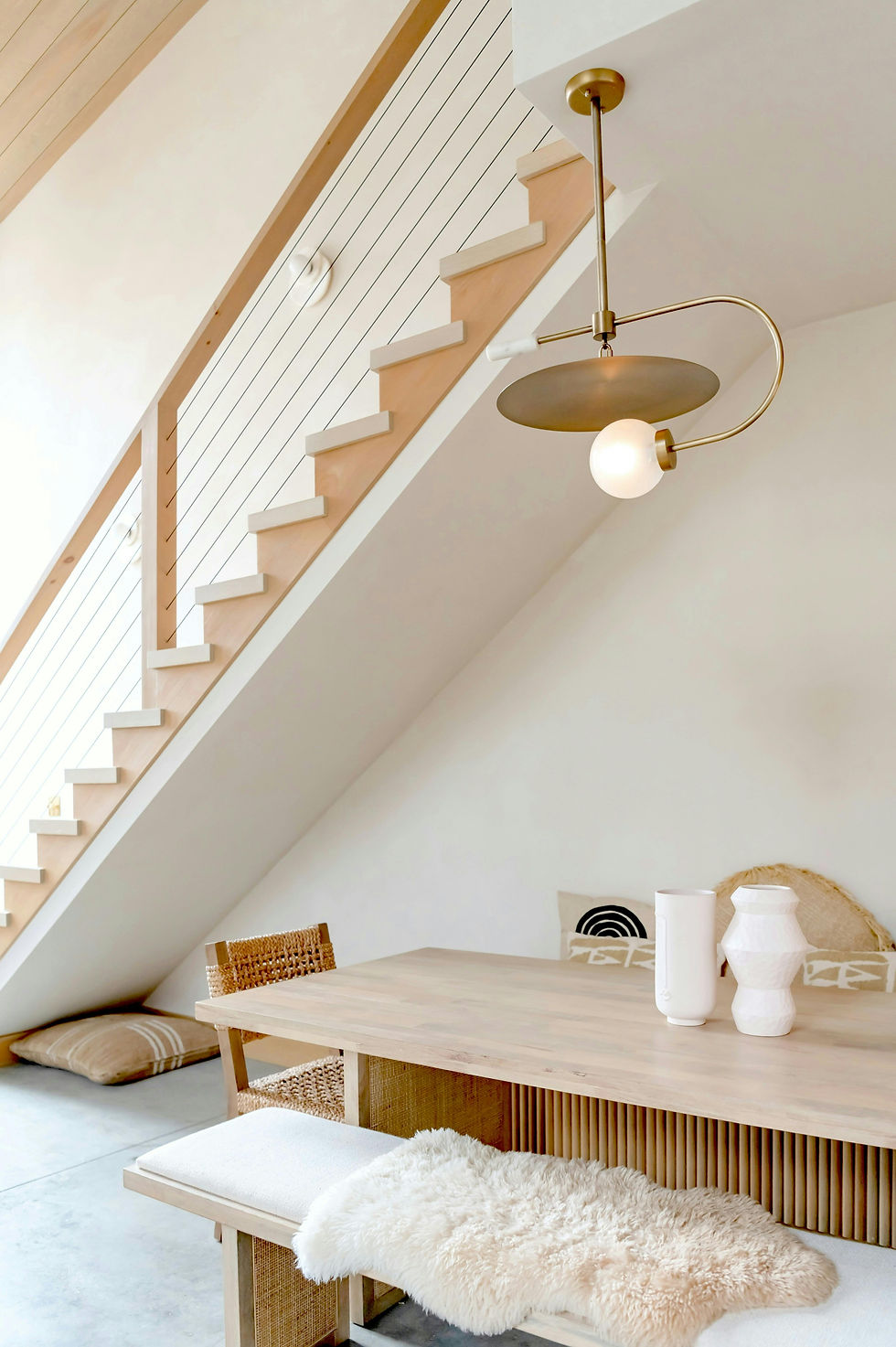Pet-Friendly Deep Cleaning: Odor, Dander, and Stain Removal Without Harsh Chemicals
- Oliver Owens
- Oct 20
- 6 min read
Quick take
If you share an office or home with dogs or cats, you don’t have to choose between a clean space and a pet-safe one. The secret is understanding enzymes vs. oxidizers, using the right spot methods for carpets and sofas, and having a plan for hard-surface urine mitigation that actually neutralizes odor (not just perfumes over it). Below is a practical, pet-friendly system U B Lazy Cleaning Services uses for San Antonio

homes and workplaces—minus the harsh fragrances and guesswork.
Why this matters right now in San Antonio
San Antonio’s heat can turbocharge lingering pet smells—especially in rooms with lower ventilation or older carpet pads. Add a little humidity after a rainstorm, and suddenly yesterday’s “barely there” accident is today’s “how fast can we fix this?” odor. For families (and pet-friendly offices), fragrance sensitivity is also real: powerful perfumes can trigger headaches, while harsh chemicals can irritate paws, skin, and tiny lungs.
Our approach keeps it simple: neutralize the source, lift the soils, and leave behind a space that smells like… nothing. (Which is the best smell of all.)
Enzymes vs. Oxidizers: What’s the difference—and when to use each?
Enzyme cleaners (bio-enzymatic)
What they do: Enzymes break down organic messes (urine, saliva, vomit, food soils) into smaller, non-odorous components.
When we choose them: Fresh urine spots, mystery odors in carpet padding, pet accidents on sofas/mattresses, and anywhere we want low scent and low residue.
Pros: Pet-friendly options, low fragrance, excellent at neutralizing rather than masking.
Watch-outs: Need dwell time (let them work); extreme heat can slow them down; over-wetting can push soils deeper if you don’t extract.
Oxidizers (oxygen-based)
What they do: Use oxygen to bleach/oxidize stains and odor compounds.
When we choose them: Light color correction on carpets/upholstery after enzyme work, stubborn organic discoloration, surface refreshes for grout.
Pros: Great for brightening and finishing touches.
Watch-outs: Colorfastness testing is a must. Some oxidizers shouldn’t be used on wool/silk or delicate dyes. Keep concentration and dwell time in check.
Rule of thumb: Start with enzymes to neutralize the source. If a stain shadow remains, spot-test a gentle oxidizer for cosmetic lift. Never flip that order for fresh organic soils—you’ll lock in odors.
The Pet-Safe Deep Clean Plan (Room-by-Room)
1) Carpets: get past the fibers and into the pad (safely)
Blot first, don’t scrub. Scrubbing frays fibers and spreads the spot.
Enzyme flood + dwell. Apply a pet-safe enzyme cleaner generously enough to reach the padding if urine reached it. Give it time—10–30 minutes depending on severity.
Extract, don’t just wipe. Use a spot extractor or wet/dry vac to pull the solution and soils back out (this is key to removing what the nose still detects).
Deodorize the underlayer (if needed). Persistent odors often live in the pad and subfloor. Professional “sub-surface injection + extraction” can save a carpet you thought was a goner.
Optional color lift. If a faint yellow cast remains, spot-test an oxygen-based booster. Rinse-extract lightly.
When replacement beats cleaning: If the room had repeated accidents over months, replacing pad only (and sealing subfloor) can be the faster, cheaper long-term fix—your carpet might still be salvageable.
2) Sofas & chairs: clean for cuddles, not just for looks
Check the fabric code (W, S, W/S, X). When in doubt, test an inconspicuous spot.
HEPA vacuum first. Remove dander so cleaning solutions can work on actual stains.
Enzyme pre-treat for pet spots. Lightly apply to stained zones; don’t overwet foam cushions.
Blot and lift. Microfiber towels > paper towels (less lint).
Finish with a neutral rinse. Minimal residue = fewer re-soils and less “crunch.”
Pro tip: Removable cushion covers? Clean the insert too. Odor hides in foam, not just the cover.
3) Hard floors (tile, LVP, sealed concrete): bye, “phantom pee” spots
Locate with UV light if needed—urine fluoresces, making “mystery” smells targetable.
Enzyme application on the grout line. Let it dwell to digest residue inside porous grout.
Agitate lightly + rinse. Soft brush on grout, then microfiber mop with warm water.
Seal grout after it’s fully dry for future resistance.
Avoid: Acidic cleaners on natural stone (marble, travertine). They can etch the surface.
4) Mattresses & pet beds: gentle, low-moisture wins
Mattresses: Enzyme spot, short dwell, then extract with low moisture. Airflow (fans, open windows) speeds drying.
Pet beds: If machine-washable, use fragrance-free detergents; add an enzyme booster. Sun-dry when possible for UV help.
Dander control without heavy fragrance
Capture it, don’t cover it
HEPA vacuuming (not just sweeping) keeps dander from re-circulating.
Microfiber dusting (slightly damp) traps particles instead of pushing them around.
Washable throws on favorite pet spots give you an easy, fragrance-free reset.
Air + filters
MERV-10 to MERV-13 filters in central HVAC can help capture dander without choking airflow.
Room air purifiers with HEPA are great for bedrooms and home offices. Keep fragrance-free for sensitive noses.
“What not to mix” (safety that protects pets and people)
Never mix bleach and ammonia. Many urine deodorizers or glass cleaners contain ammonia—together they can create toxic chloramine gas.
Don’t combine hydrogen peroxide and vinegar in the same container. Together they can form peracetic acid, which is irritating/corrosive.
Skip strong essential oils on pet areas (especially tea tree oil around cats). Potent oils can be toxic if absorbed or licked.
Avoid phenol-based disinfectants around cats; they’re more sensitive to these chemistries.
If you want a second opinion on ingredient safety around pets, the ASPCA maintains helpful guidance on common household toxins (great to share with family or your office manager). See ASPCA’s pet-safety resources for reference.
Green doesn’t mean weaker—it means smarter
“Green cleaning” is about process as much as product:
Mechanical removal first: HEPA vacuuming, microfiber, hot water extraction where appropriate.
Right chemistry, right soil: Enzymes for organics, pH-neutral cleaners for sealed floors, oxygen boosters only when needed.
Rinse and residue control: The fewer sticky residues left behind, the less re-soiling (and the fewer fragrances you’ll need to “hide” anything).
When DIY is enough—and when to call the pros
DIY is perfect for: fresh accidents, small spots, routine dander control, light upholstery refresh, grout lines in small baths.
Call U B Lazy Cleaning Services when:
Odor returns within 24–48 hours (likely pad or subfloor involvement).
There are multiple rooms or repeated accidents over months.
You need low-fragrance, pet-safe deep cleaning for sensitive individuals (kids, allergy sufferers, fragrance-sensitive staff).
You want sub-surface injection & extraction, HEPA pre-filtration, and grout sealing handled in one visit.
Our pet-friendly deep clean, step by step
Walkthrough + UV mapping to find every source (not just the obvious ones).
HEPA pre-vac to remove dander and dry soils.
Targeted enzyme treatments with proper dwell times (we protect wood bases and delicate fibers).
Sub-surface extraction where needed to pull contaminants from pads and cushion cores.
Neutral rinse (low-residue) so surfaces feel clean, not sticky or perfumed.
Optional oxygen brightening on color-safe textiles and grout.
Drying + airflow so spaces are ready quickly—without heavy scents.
Pet-safe freshening ideas (no heavy perfumes)
Simmer plain water with a few lemon peels in the kitchen while you’re home (never leave unattended).
Keep a small jar of baking soda in the fridge and near pet-trash to absorb smells.
Open windows for cross-ventilation on good-air-quality days.
Launder pet blankets/throws weekly with fragrance-free detergent and an enzyme booster if needed.
FAQs
Will enzyme cleaners make my house smell “weird”?
Most are low scent. Any temporary “cleaner” smell dissipates as the enzymes finish working and you rinse/extract.
Can I use vinegar on urine?
Vinegar may reduce surface odor temporarily, but it doesn’t fully break down urine crystals—especially in padding. We recommend enzymes first, then proper extraction.
Why does the odor come back after carpet cleaning?
If the pad or subfloor wasn’t neutralized (or was re-wetted without extraction), trapped odor can “reactivate.” Sub-surface treatment prevents this.
Are essential oils safe for pets?
Use extreme caution. Some are problematic for cats and small dogs. If you use them at all, keep diffusion light, temporary, and away from pet beds. When in doubt, skip them.
Ready to breathe easier—without harsh chemicals?
If you’re battling recurring pet odors or need a deep clean before guests, let our team handle the source, not just the smell. We offer pet-safe options that align with your family’s (or office’s) sensitivities and cleaning standards.
Explore our Deep Cleaning services
Learn more about Pet Odor Cleaning
Prefer low-fragrance and green methods? Ask us for a Green Cleaning plan tailored to your space.



Comments